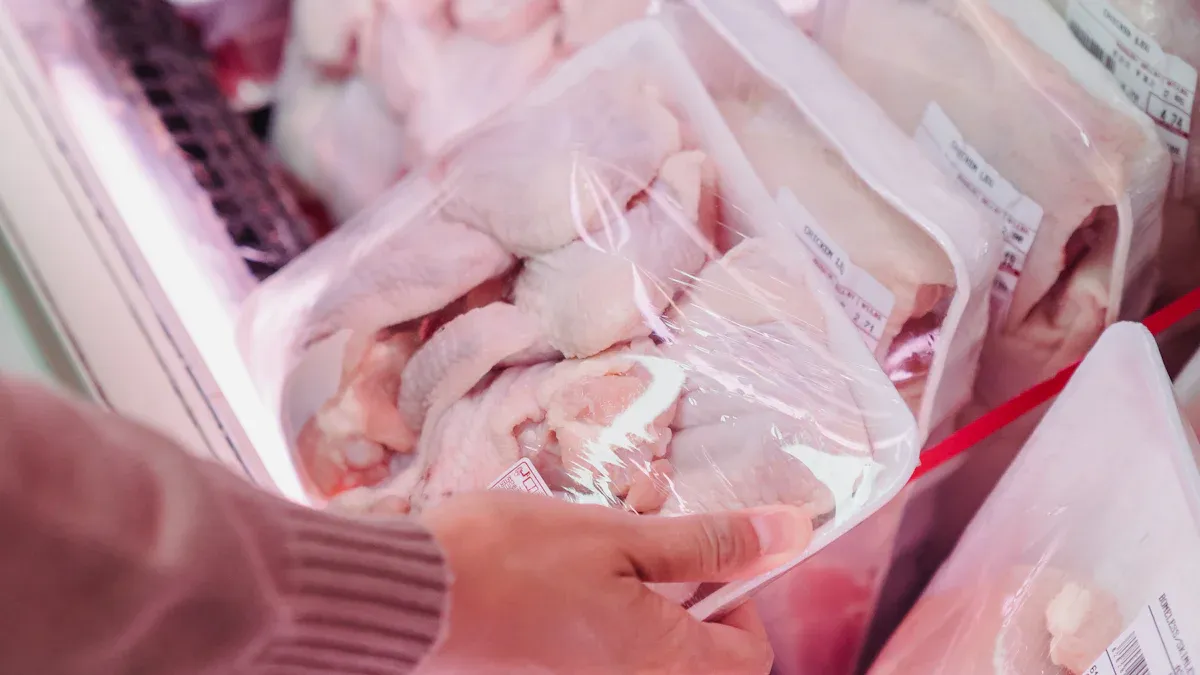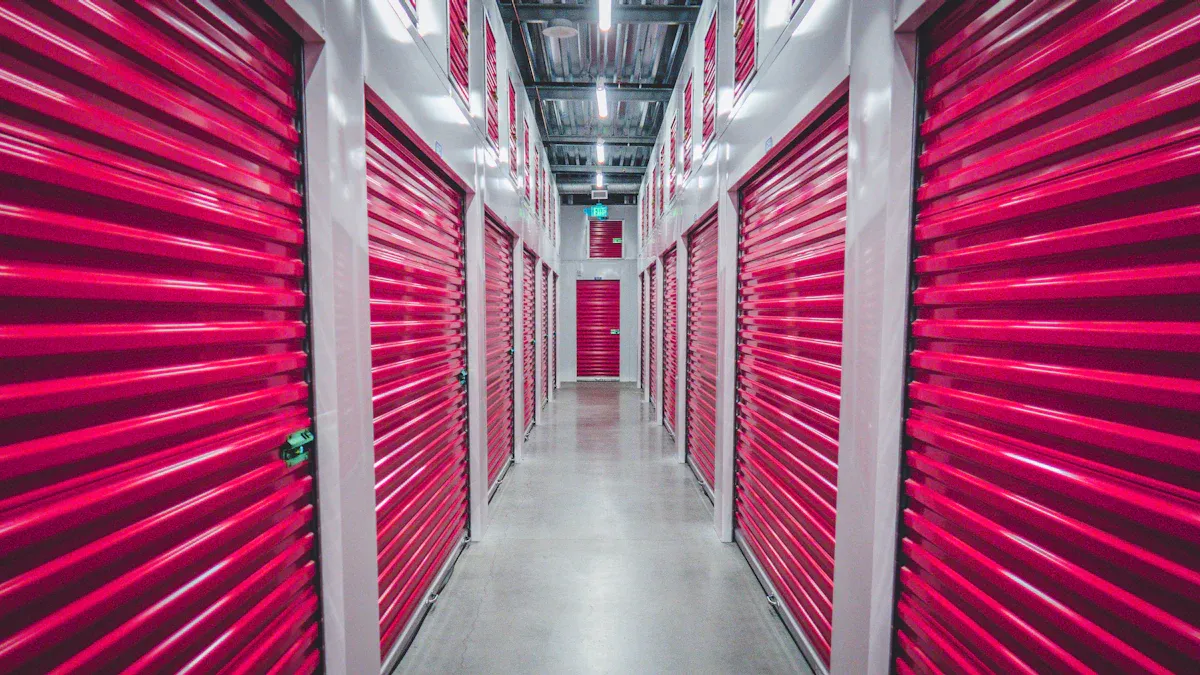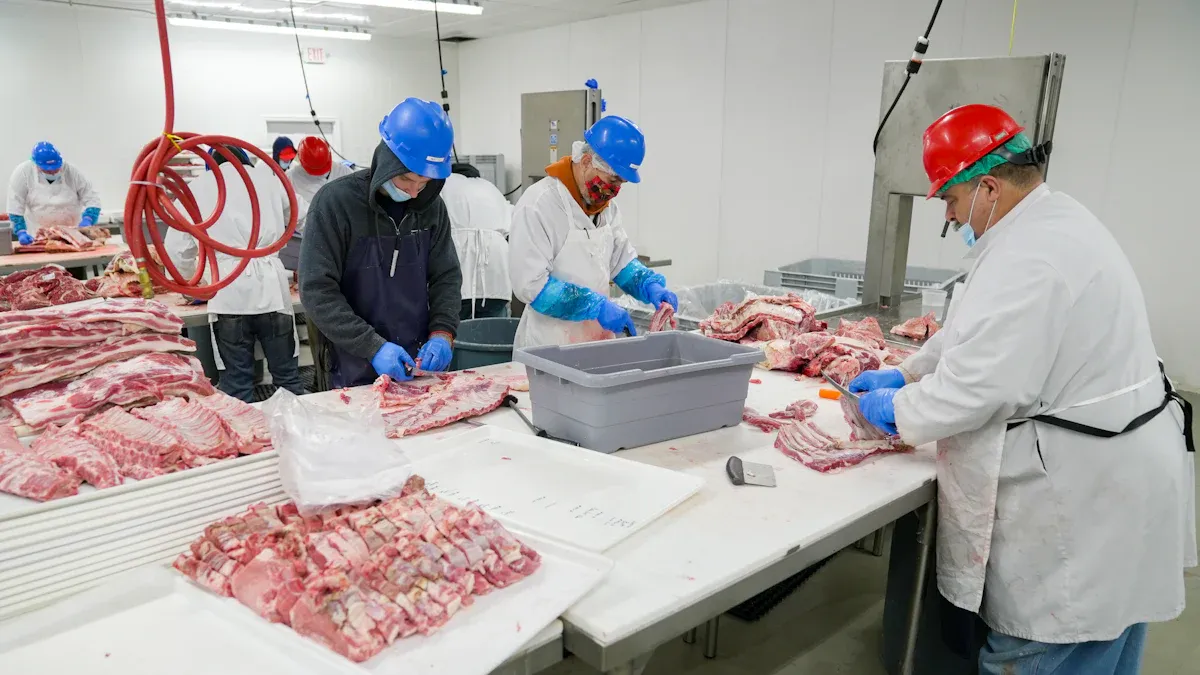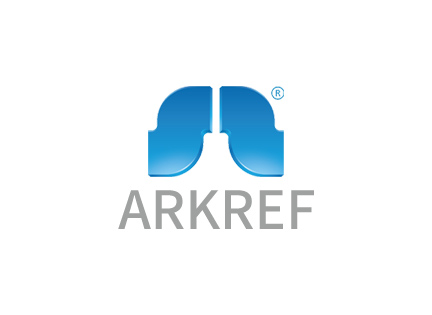Cold room picks that keep your meat fresh

Looking for the best way to keep meat fresh? Here are some top cold room choices you should know:
Walk-in cold rooms are good for big storage.
Modular cold rooms are easy to set up.
Mobile cold rooms work well for events and moving around.
Solar-powered cold rooms help save energy.
A good cold room keeps meat at the right temperature. It helps lock in freshness. Studies show that storing meat for up to five months works well in the right cold room. Protein and fat levels stay steady. Moisture drops just a little. This keeps food safe and tasty.
Storage Duration | Moisture Content | Protein Content | Fat Content | Water-Holding Capacity | Freshness Indicator | Safety Indicator |
|---|---|---|---|---|---|---|
Goes down | Goes up | Goes up then down | Goes down | Changes from fresh to less fresh | TBARS stays lower than safe value of 3.11 |
Key Takeaways
Pick the best cold room type for your needs. Walk-in cold rooms work well for storing lots of meat. Modular cold rooms are good if you want more options and to save money.
Keep the temperature under 40°F to keep meat safe. Check the temperature often so the meat does not go bad.
Make a cleaning plan to keep things clean. Clean all surfaces every day. Put raw meat on the lowest shelf to stop germs from spreading.
Look for energy-saving features and warranties when you buy. These can help you save money and feel less worried.
Use remote monitoring systems for temperature and humidity. This lets you act fast if something changes and could hurt the meat.
Cold Room Features
Temperature Control
Your cold room should keep meat at the best temperature. Meat stays safe if it is colder than 40 degrees Fahrenheit. This stops bacteria from growing on deli meats and other cuts. Cold storage with good temperature control keeps food fresh. Many cold rooms let you check the temperature on your phone. Some even have CE certification and warranties for extra safety.
Recommended Storage Temperature | Description |
|---|---|
Best for deli meats | |
Colder environments preferred | Prolongs meat freshness |
Humidity and Insulation
A cold room needs the right humidity and strong insulation. Too much water in the air can spoil meat. You need good air flow and a controlled space. Strong insulation keeps the cold inside and heat outside. This helps save energy. Some cold rooms use solar power to lower costs and help the earth.
Hygiene and Cleaning
A clean cold room is important for food safety. Surfaces should be easy to wash to stop germs. You should wash your hands and use different cutting boards. Clean surfaces often to stop contamination. Put raw meat on the bottom shelf. Use different tools for raw and cooked foods. Safe habits and cleaning help your cold room pass haccp checks.
Wash your hands after touching different foods
Clean and sanitize all surfaces often
Put raw meat on the lowest shelf
Use separate utensils for raw and cooked foods
Capacity Options
There is a cold room for every need. Walk-in coolers and freezers are good for big stores. Some can hold boxes up to 16'x20' in size. You can choose by BTU or tonnage for your storage needs. Prices go from $4,625 to $9,932, so there are choices for every budget. Cold rooms come in many sizes for homes or big businesses.
Tip: Always look at the warranty and energy-saving features before buying. These can help you save money and avoid problems later.
Top Meat Cold Rooms

Best Overall
A walk-in cold room is the best choice for most people. It gives you lots of space to store meat. The insulation is strong and keeps the cold inside. You can control the temperature easily. This helps keep meat safe and stops it from going bad. Walk-in cold rooms are good for restaurants and butcher shops. They also work for small warehouses. You can set the temperature for each kind of meat. This keeps everything fresh. Many walk-in cold rooms let you check the temperature on your phone. Some have warranties for compressors and parts. This helps you feel safe about your purchase.
Pros:
Large storage capacity
Consistent temperature ranges
Remote monitoring available
Long warranty terms
Cons:
Needs more space
Higher upfront cost
Tip: Pick a walk-in cold room with Energy Star certification. You can save up to 25% on your energy bills.
Best Budget Option
If you want to spend less money, try a modular walk-in cooler. These cold rooms are easy to put together. You can move them if you need to. Some cost as little as $399. This makes them good for small businesses or homes. Modular cold rooms use good airflow and strong insulation. This keeps meat fresh and safe.
Pros:
Affordable price
Quick installation
Flexible size options
Cons:
Smaller capacity than full walk-in models
Fewer advanced features
Product Description | Price Range | Capacity/Features |
|---|---|---|
Modular Walk-in Cooler | $399-550 | Mobile cold storage option, easy to move |
Best for Small Business
Small businesses need cold rooms that fit their space and budget. Mini commercial air blast freezers and compact mini blast freezers are good choices. These cold rooms freeze meat quickly. This stops spoilage and contamination. You can store enough meat for a week or two. The small size fits in tight spaces.
Pros:
Fast freezing keeps meat fresh
Fits in small kitchens or shops
Lower energy use
Cons:
Limited storage space
Not ideal for bulk storage
Product Description | Price Range | Capacity/Features |
|---|---|---|
Mini Commercial Air Blast Freezer | $860-1,200 | Suitable for meat storage, compact |
Compact Mini Blast Freezer | $870-877 | Quick freeze for bakery and small kitchen use |
Best for Large Scale
Big businesses need strong cold rooms with lots of power. These cold rooms use strong compressors and thick insulation. Advanced controls help keep meat at the right temperature. You can store lots of meat safely. Many models meet strict food safety rules. This helps stop contamination and spoilage.
Feature | Specification |
|---|---|
Compressor Power | |
Temperature Range | 28°F–32°F |
Temperature Accuracy | ±1°F |
Certification | NSF/ANSI 7, UL sanitation |
Energy Efficiency | Energy Star-rated, 15-25% cost savings |
Construction Quality | 18-gauge stainless steel, hermetically sealed |
Recovery Time | 30-minute recovery after door openings |
Warranty Terms | Compressors (5+ years), parts (2 years), labor (1 year) |
Pick the right refrigeration type for your needs.
Make sure insulation R-values are above 7.5 m²·K/W.
Always check for ISO 23953-2 compliance for food safety.
Pros:
Handles large volumes
Meets strict food safety standards
Long-lasting and durable
Cons:
High initial investment
Needs more space and power
Best for Home Use
At home, you do not need a huge cold room. Mini blast freezers and table top blast chillers are good for this. These cold rooms freeze meat quickly. This keeps meat fresh and stops spoilage. You can store meat for weeks. Many models are small and fit on a counter or in a pantry.
Product Description | Price Range | Capacity/Features |
|---|---|---|
Mini Blast Freezer | Compact design, suitable for home use | |
Table Top Small Commercial Blast Chiller | $956-1,043 | Quick freezing capabilities |
Fast Freezing Blast Chiller | $940-1,100 | Shock freezing technology |
Portable Ultra Low Temperature Freezer | $1,249-1,650 | Extremely low temperatures for preservation |
Pros:
Fits in small spaces
Easy to use
Quick freezing stops spoilage
Cons:
Limited storage capacity
Not for bulk storage
Note: Always keep your storage temperature below 40°F at home.
Modular and Mobile Options
Sometimes you need a cold room that can move or change size. Modular and mobile cold rooms are flexible. You can set up a containerized cold room in a few hours. These cold rooms are good for events or emergencies. You can move them to different places. Good airflow and strong insulation keep meat at the right temperature. This helps stop contamination and spoilage.
Quick installation—ready in hours after connecting to power
Easy to move and relocate
Great for temporary or emergency storage
Pros:
Flexible and portable
Fast setup
Good for changing needs
Cons:
May cost more for short-term use
Not as energy efficient as built-in models
If you need a cold room for a special event or busy season, modular and mobile options are best. They help you keep meat cold and safe wherever you are.
No matter which cold room you pick, always manage the temperature well. Handle meat safely and follow haccp guidelines. The right cold room helps you avoid contamination and spoilage. It keeps your business or home running smoothly. Look for remote monitoring, energy-saving features, and strong warranties. With the right cold storage, you can keep meat fresh, safe, and ready to use.
Cold Storage Comparison
Features Table
You want to see how each cold room stacks up? Here’s a handy table that shows the main features, so you can pick the best cold storage for your needs. This table covers storage capacity, temperature ranges, energy use, and special features.
Cold Room Type | Storage Capacity | Temperature Ranges | Energy Use | Special Features |
|---|---|---|---|---|
Walk-in Cold Room | Large | 28°F–40°F | High | Remote monitoring, warranty |
Modular Walk-in Cooler | Medium | 32°F–40°F | Medium | Easy setup, portable |
Mini Blast Freezer | Small | -10°F–32°F | Low | Fast freezing, compact |
Mobile Cold Room | Medium | 32°F–40°F | Medium-High | Portable, quick install |
Table Top Chiller | Small | 32°F–40°F | Low | Fits on counter, easy to clean |
Tip: Always check for proper airflow and easy cleaning. These help prevent contamination and spoilage.
Price and Value
When you look at price, you want the best value for your money. Walk-in cold rooms cost more, but you get lots of storage and strong features. Modular cold rooms give you flexibility and save space. Mini blast freezers and table top chillers work well for home use or small shops. Mobile cold rooms help when you need cold storage at events or in emergencies.
Walk-in cold room: $4,625–$9,932. Great for big storage and long-term use.
Modular walk-in cooler: $399–$550. Good for small businesses or homes.
Mini blast freezer: $421–$1,289. Best for quick freezing and small storage.
Mobile cold room: $1,500–$5,000. Use for events or temporary needs.
Table top chiller: $956–$1,043. Perfect for home kitchens.
You should always match your cold storage to your needs. If you store lots of meat, go for a bigger cold room. If you want to avoid spoilage and contamination, pick a model with strong insulation and remote monitoring. Always keep an eye on storage temperature and follow safe handling rules. Good cold storage helps you meet haccp standards and keeps your meat safe.
Remember: The right cold room protects your meat from spoilage and contamination. It also saves money by keeping your storage efficient.
Choosing a Cold Room
Business Size
You want a cold room that matches your business size. Small shops need less storage. Large restaurants or meat processors need more space. If you run a small deli, a mini blast freezer or modular walk-in cooler works well. Bigger businesses should look at walk-in cold rooms with efficient air circulation. These rooms help with proper airflow and keep meat fresh longer. Always check shelf life guidelines for your meat. This helps you avoid spoilage and keeps food safety high.
Meat Type and Volume
Think about the kind of meat you store. Poultry, beef, and fish need different storage temperatures. You should keep each type at its ideal temperature. If you store large volumes, pick a cold room with strong compressors and easy-to-clean surfaces. This helps with preventing contamination and spoilage. Use a cold room with hygienic design to make safe handling easier. Follow haccp rules for best results.
Meat Type | Ideal Temperature | Storage Needs |
|---|---|---|
Poultry | 32°F–36°F | Medium to large |
Beef | 28°F–32°F | Large |
Fish | 30°F–34°F | Medium |
Budget and Costs
Your budget matters. Cold rooms come in many price ranges. Modular options cost less and work for homes or small shops. Walk-in cold rooms cost more but offer bigger storage. Mobile cold rooms help if you need temporary storage. Always look for energy-saving features. These save money over time. Check the warranty before you buy. This protects you from costly repairs.
Tip: Set your storage temperature right to avoid spoilage and contamination.
Customization
You can customize your cold room. Add shelves, racks, or remote monitoring. Some cold rooms let you expand later. If you plan to grow your business, pick a model that allows future expansion. Custom features like alarms, digital controls, and extra insulation help with food safety and preventing contamination. Choose a cold room that fits your needs now and in the future.
Note: Customization helps you keep your cold room efficient and safe. It also makes cleaning and maintenance easier.
Meat Cold Rooms Maintenance

Cleaning Tips
You want your cold room to stay clean and safe. Start by wiping down all surfaces every day. Use warm, soapy water for shelves and walls. Rinse with clean water. Dry everything with a towel. Clean up spills right away. This stops bacteria from spreading. Always keep raw meat on the lowest shelf. This helps prevent contamination from drips. Remember to wash your hands before and after handling meat.
Pro Tip: Make a cleaning schedule and stick to it. Consistency keeps your cold room fresh.
Monitoring Systems
You need to check the temperature often. Use a digital thermometer or a remote monitoring system. These tools alert you if the temperature changes. If the cold room gets too warm, meat can spoil faster. Some systems send alerts to your phone. This helps you act quickly and avoid spoilage. Check the humidity too. High humidity can lead to mold and contamination.
Preventive Care
Take care of your cold room before problems start. Inspect door seals every week. Replace them if you see cracks. Clean the condenser coils once a month. Dust and dirt can make your cold room work harder. This wastes energy and can cause breakdowns. Schedule a professional check-up once a year. This keeps your storage running smoothly.
Storage Best Practices
You want to store meat the right way. Label all packages with the date. Use older meat first. Keep different types of meat separate. This lowers the risk of contamination. Do not overload the shelves. Air needs to move around each package. Good airflow helps prevent spoilage. Always keep the cold room door closed when not in use.
Best Practice | Why It Matters |
|---|---|
Label packages | Use oldest meat first |
Separate meats | Lower contamination risk |
Do not overload | Better airflow, less spoilage |
Close door quickly | Keep temperature steady |
Remember: Good habits keep your meat fresh and your cold room working its best.
You have many great cold room options to keep your meat fresh. Walk-in cold rooms work best for big storage. Modular and mobile units give you flexibility. Mini blast freezers fit well at home. Look for strong insulation, easy cleaning, and remote monitoring.
Match your cold room to your space, meat type, and budget.
Stick to a cleaning routine and check temperatures often.
Use the tables and tips above to pick the right cold room. You can keep your meat safe and your storage stress-free!
FAQ
How cold should my meat cold room be?
You want to keep your cold room below 40°F. This stops bacteria from growing and keeps your meat fresh. For best results, check the temperature every day.
Can I use a cold room for other foods?
Yes! You can store fruits, veggies, and dairy in your cold room. Just keep raw meat on the lowest shelf. This helps prevent cross-contamination.
What is the cold chain and why does it matter?
The cold chain is the process of keeping food cold from the supplier to your kitchen. If you break the cold chain, your meat can spoil faster and become unsafe to eat.
How often should I clean my cold room?
You should clean shelves and surfaces every day. Wipe up spills right away. Make a weekly schedule for deep cleaning. This keeps your cold room safe and your meat fresh.
See Also
Exploring Cold Rooms for Optimal Meat Preservation
The Role of Cold Rooms in Food Safety
The Importance of Cold Rooms for Freshness

